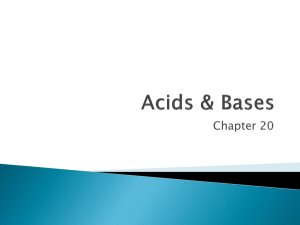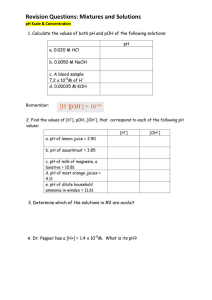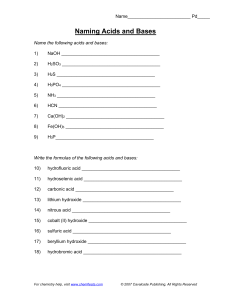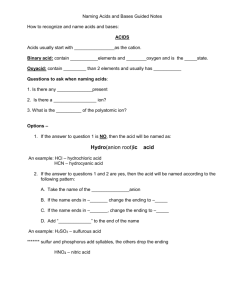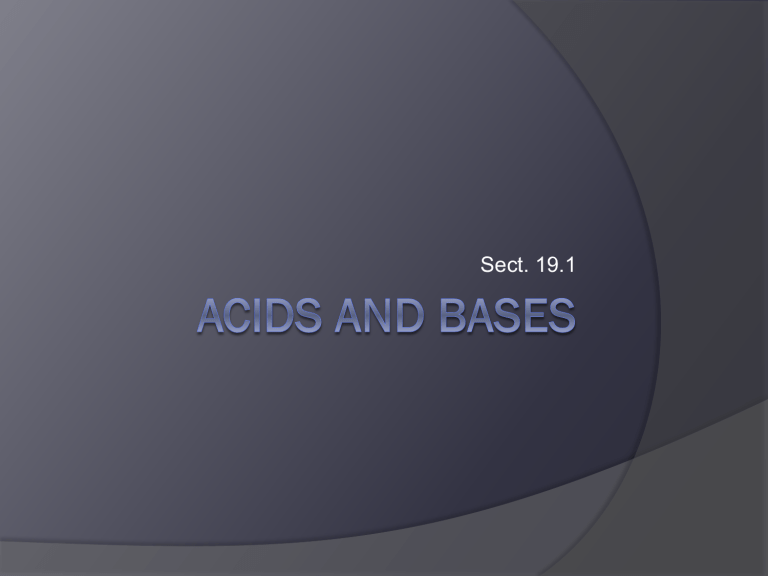
Sect. 19.1 Acids: Taste sour Change the color of an acid/base indicator Conduct electricity when dissolved in water Bases: Taste bitter and feel slippery Change the color of an acid/base indicator Conduct electricity when dissolved in water Arrhenius Acids and Bases Arrhenius acids Always begin with H Ionize to form H+ in aqueous solution Arrhenius bases Always contain OH- (hydroxide) Produce hydroxide ions in solution This is the most specific and exclusive definition of acids and bases Other Definitions Type Arrhenius Bronsted-Lowry Acid H+ producer H+ donor Base OH- producer H+ acceptor Lewis Electron-pair acceptor Electron-pair donor Naming Acids When the name of the anion paired with H+ ends in –ide, the acid name begins with hydro-. The stem of the anion has the suffix –ic and is folllowed by acid. 2. When the anion name ends in –ite, the acid name is the stem of the anion with the suffix –ous, followed by acid. 3. When the anion name ends in –ate, the acid name is the stem of the anion with the suffix –ic, followed by acid. HCl carbonic acid H3PO3 nitrous acid HNO3 acetic acid H2SO4 hydrosulfic acid 1. Naming Bases Bases are ionic compounds, and are named just as all other ionic compounds are. KOH Fe(OH)3 Ca(OH)2 sodium hydroxide magnesium hydroxide copper(II) hydroxide


